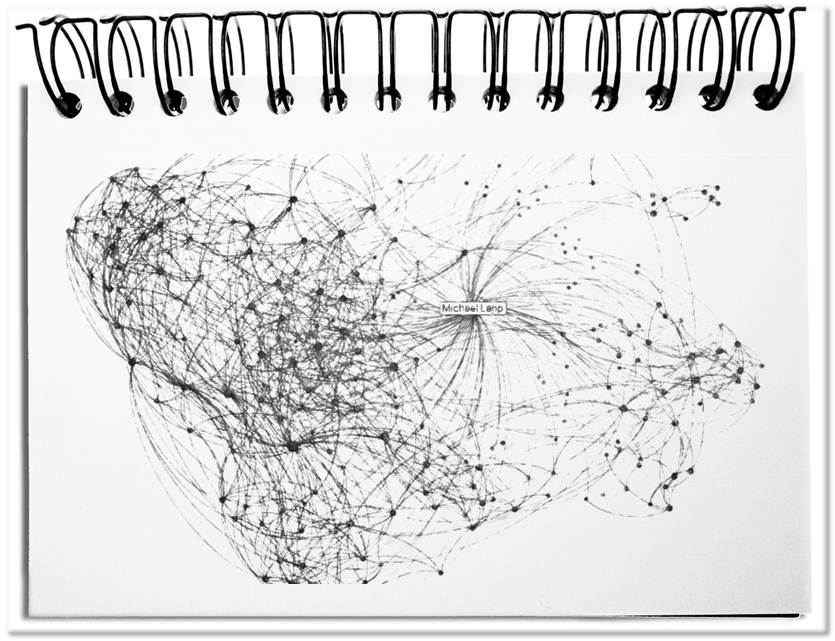Once upon a time in the retail sector, the physical customer, who made an effort to go to a shop, had the full attention of the staff. Nothing was more important than direct contact, personal advice, and friendly interaction with the customers. Some callers were desperate at that time because simply nobody answered the phone as long as a customer was in the shop. Today’s automated answering machines, which automatically keep customers away with always the same questions, only to finally announce in the friendliest 22 kHz voice that all lines are busy and that one should please call back at a later time – and the whole question-answer litany starts all over again. The frustration gets the subcontractors of the subcontractors at the time of the delivery, who, at the end of the value chain, maintain the remaining customer contact – without being part of the webshops, having any influence on the overall process or getting a reasonable share of the turnover. The service pendulum has swung back imperceptibly. We now find ourselves in a clumsy consumer world in which the consumer is allowed to pay, but without claim to an appropriate deliverable.
What should companies do to provide their deliverables appropriately if they want to stand out from the competition?
- Omnipresent contact
The legislator has stipulated that all providers must be available to customers – try it at Amazon, Google, LinkedIn, Alibaba, or Facebook. A notable exception is Xing with its imprint. Providing competent contact persons is an additional effort, but one that is rewarded by customers in the long run. But be careful: Today’s computers work more reliable than call centers in India. - Multi-Channel Access
Content can be reused in the offline and online channels. Businesses with local reach can approach customers outside the Internet with posters, direct mail, but also in their shops, and with mobile market stands and trade booths. This does not mean that you do not need an online presence: website, email marketing, and participation in social networks. It is not only about initiating sales but also about support in the selection, deployment, and problem-solving. - Fixed opening hours
The Internet promises 24/7 availability. For economic reasons, many people offer their deliverables only during regular office hours from nine to five. Customers understand this as long as they do not have any queries. With today’s expectations of quick contact, it is smart to offer for the remaining hours an emergency channel, allowing customers to get rid of their inquiries at short notice. - Minimized response time
In any case, answers to the customer should be given quickly. It is useful to ensure a response time for the customer – inquiries from the night are processed immediately, the next morning. It is not enough to assign one employee who then handles dozens of incoming requests. What counts is the time it takes for an inquiry to be processed. If the capacities are not sufficient, the response time should be extended, or more positions should be provided. Customers without an answer might be lost forever. - Personal address
The back door of well prepared, automated reply mails, which do not contribute to the solution, is of no use anymore. The customers know that “We will take care of your request as soon as possible” means that nobody has taken care of it yet. Feedback should be expressly formulated, with a personal salutation, the reference to the problem, and a first sketch of the solution. - Sound monitoring
Requests via the Internet can be easily tracked. But today, calls can also provide data with the appropriate ticketing system. The duration from receipt to solution shows possible weak points. This includes the weaknesses of individual persons. With all the protection of employees, it would be fatal to not being able to make their performance visible. - Consistent elimination of weaknesses
If weaknesses become visible, they should be addressed in the short term. In Japan, anyone can stop the production line if an error appears. This is the only way to avoid the accumulation of poor outcomes. Even in the case of employee data, the ultimate aim is not to impose sanctions but to improve skills through appropriate measures.
The cost advantages of online retailing, without store and Sales staff, but with the economies of scale, unlimited scope, and flexible supply chains, have wiped out not only the retail industry but also the service mindset. If a problem occurs in an online shop, people search for a long time until a contact is found and established – if at all. And this applies less to the small shops that fear reprimands than to the large corporations, such as the GAFAs (Google, Amazon, Facebook, Apple). If packages are additionally reported that cannot be found or are not available at the place where they should be stored, then the house of cards collapses over the customer who is willing to pay – and the responsibility always have the others in the value chain who are to blame.
Bottom line: The New World of consumption has prevailed, despite a poor CO2 balance, precarious jobs, and the complete loss of the service idea. Customers generate income, but companies have found ways to make the expensive offers of retailers disappear. The customer accepts this as long as the price is right – i.e., cheap, as long as no support is required, and no problems occur. Since this will not continue, the providers should rethink their approaches. Why not offer a clear point of contact? Or offer deliverables to customers through a variety of channels? – With precise opening hours, zero latency, and a personal approach. At the previous Point of Sales (PoS), providers had personal contact with customers’ questions and needs. Today, they use an IT-supported monitoring system. If the identified weaknesses are then eliminated, the pendulum starts swinging back again – out of the service desert.


